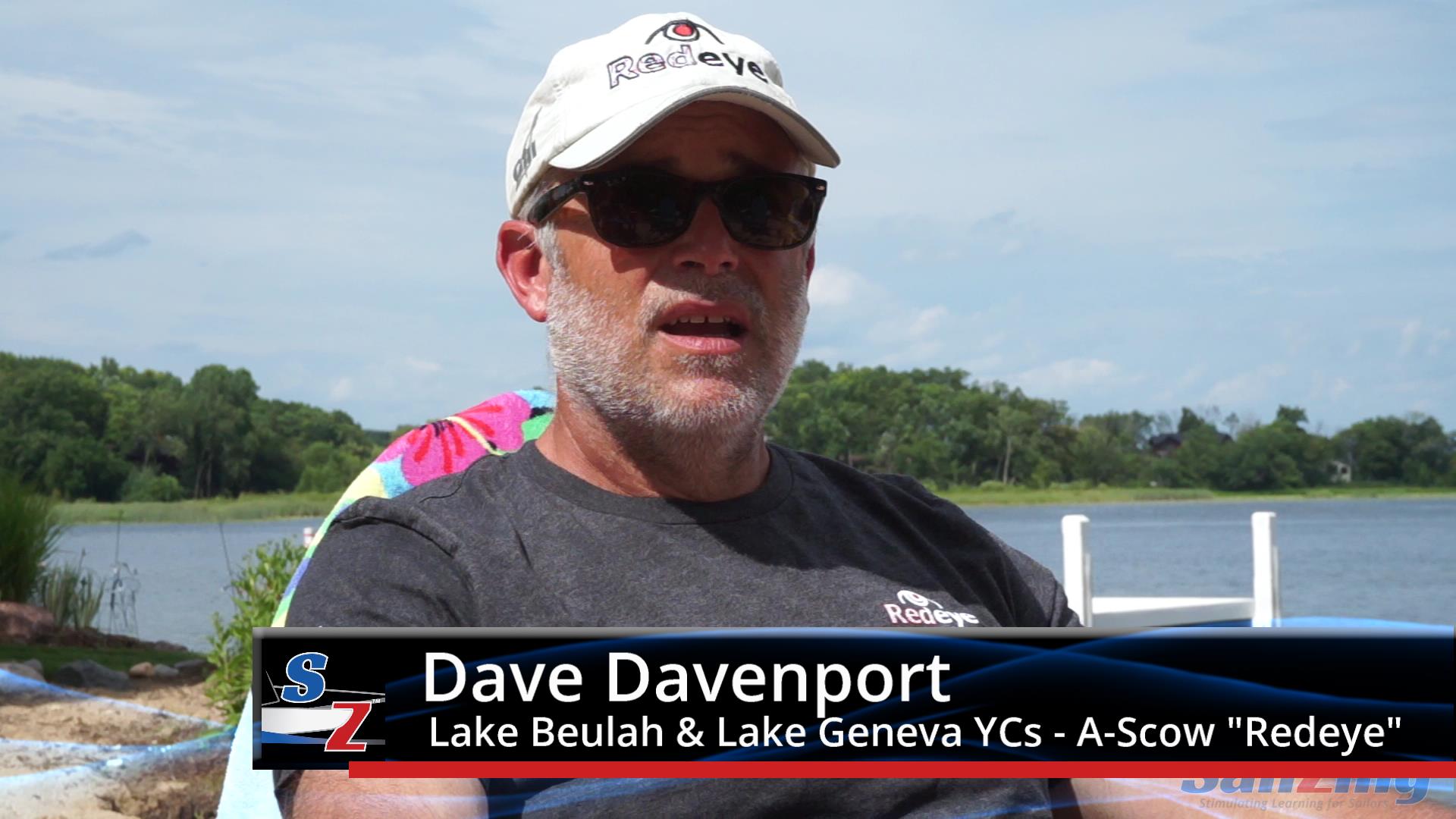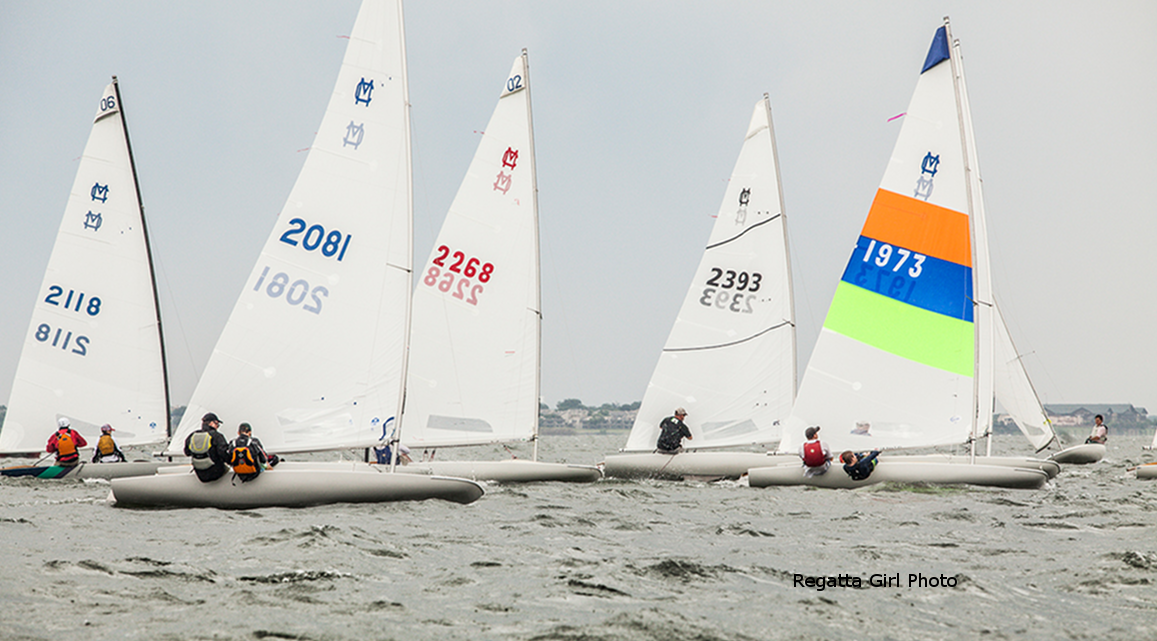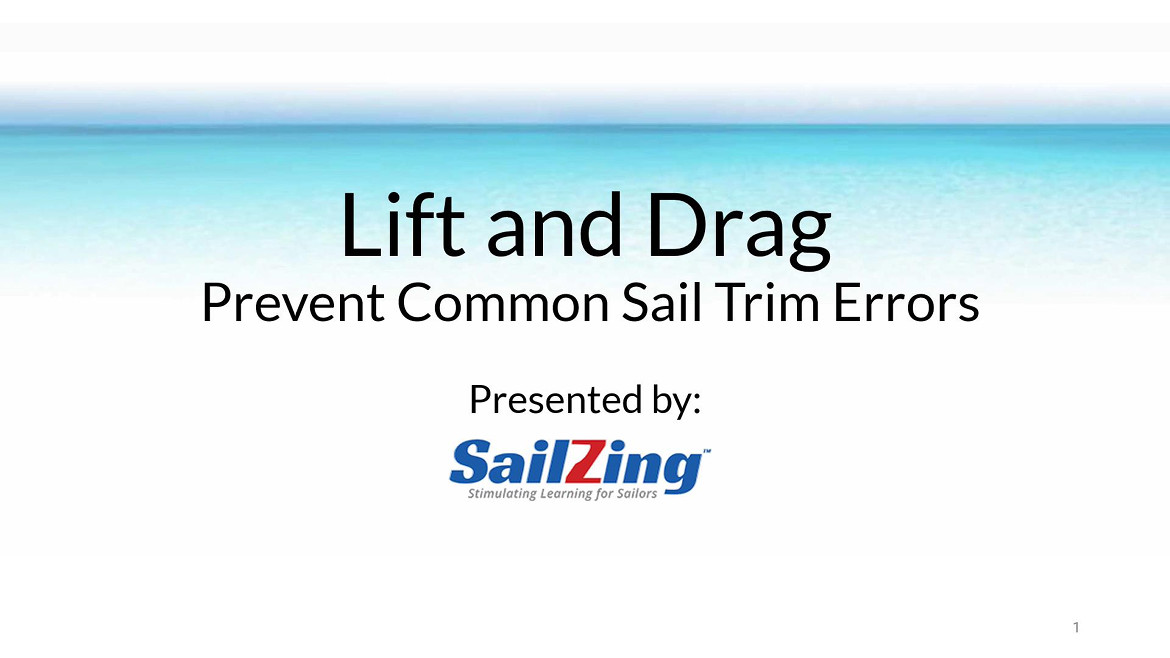On a windless day at the 2020 Train Wreck regatta, the organizers put together a discussion of MC Scow sail trim. Bill Draheim from Quantum Sails and Mike Considine from UK Sailmakers answered questions from the fleet. SailZing captured the discussion on video.
Click to watch the video or look below for a summary of the key points and timings in the video. For much more depth on these topics, follow our series of tutorials on sail trim. We have completed two parts of this series with more in progress.
MC Scow Sail Trim – Summary of Topics and Key Points
I just put up my new sail. The shape was not what I expected. (01:12 in video)
The sail needs wind before it will assume the design shape. Once you get out on the water with some breeze and start using the controls, it should be fine.
Primary Controls – Mainsheet and Vang (01:44)
The vang and mainsheet are the primary MC Scow sail trim controls. They help you power up or depower by controlling mast bend (as well as twist and leech tension). Depowering is a matter of flattening the sail and opening up the leech.
- Mainsheet – tighter main bends the mast and closes leech
- Vang – tighter vang bends the mast and closes leech
Depowering – Vang Sheeting and Traveler (03:14)
Bill and Mike use slightly different approaches to depowering.
- Bill uses less vang and drops the traveler. He adjusts the traveler often and is not afraid to drop it all the way if needed. (More on this later at 25:56)
- Mike uses more vang and eases the main more in a puff (vang sheeting). This lets the boom move out without letting it rise too much to make the sail fuller. Mike also drops the traveler when really overpowered.
Raising Boards When Overpowered (04:41)
Mike raises his leeward board when he drops the traveler. This reduces weather helm, which reduces drag and lets you steer to keep the boat at the right heading. He also says that raising the board depowers the boat. We’ll discuss this point in our sail trim series.
Bill doesn’t normally need to raise the board, since he normally sails with crew in heavy air.
Should You Worry About Using Different Sails in Different Conditions? (10:19)
Both Bill and Mike believe you can be successful using one sail and learning how to shape it for the conditions. However, having a flatter sail for very heavy air without crew, or a fuller sail for lumpy conditions in light to medium air might be an advantage.
Spreader Sweep (11:30)
Spreader sweep affects mast bend. More sweep helps the mast bend sooner, while less sweep restricts bending. Sidestay tension also affects bend.
MC Scows with spreader brackets allow only two positions – about 3-1/2″ of sweep (forward setting) or about 4-1/2 ” of sweep (aft setting). Newer Melges boats have continuously adjustable sweep.
The sailmaker’s tuning guide gives you the recommended sweep to match the sail design. See the MC Scow tuning guides here.
Overbend Wrinkles (14:09)
When you bend the mast more than curve in the luff of the sail, the sail develops diagonal wrinkles extending from the luff towards the clew. These are called overbend wrinkles and indicate that the mast bend exceeds the sailmaker’s design for the sail. Slight overbend wrinkles are OK, but consider using other depowering tools if they become exaggerated.
With excessive mast bend, you can invert the sail. In extreme conditions, this can be fast because the leech opens way up. You have to really pull the controls hard to achieve this.
Outhaul (17:36)
Bill recommends using your outhaul – many sailors don’t. In very light air (0-2 mph) it may need to be tight to help retain attached flow. However, in light to medium air, loosen it to get more depth and power. This also closes the lower leech to help pointing. Then, increase tension as you become overpowered.
Bolt Rope – Luff and Foot (20:06)
Most sailors are aware of the need to cut the bolt rope stitching on the luff of the sail (see our post on this). Do you have to worry about doing the same for the foot of the sail? Bill and Mike have never experienced any issues with the bolt rope on the foot shrinking.
Cunningham and Draft Position (21:11)
When the mast bends, the position of maximum draft moves aft in the sail. The cunningham compensates for this. Tension the cunningham to return the draft to its normal position. The normal maximum draft position is 40-45% aft of the luff.
In boats without jibs, you may also want to bring the draft forward of the normal position in lumpy conditions. This makes the groove wider and flattens the leech.
Dropping the Traveler when not Overpowered (25:56)
Mike sails with traveler on center when not overpowered. He also mentions that it is possible to bring the traveler to windward in very light air to help open the leech, although he doesn’t use this technique.
Bill advocates dropping the traveler at least slightly instead of just pulling on more vang. He points out that cat-rigged boats (no jib) have more trouble going forward. Dropping the traveler helps the boat go forward. This does not reduce pointing, since the extra forward speed helps the foils develop lift.
Mast Rake (28:04)
Bill’s rake is around 28′ 3-1/2″. Mike uses 28′ 4″ plus. Mike adjusts his rake more forward in heavier air to reduce weather helm and make the mast slightly stiffer.
Bill points out that mast rake is not a high priority. Adjusting mast rake a few inches either way is not going to make a major difference in performance. Other high performance boats adjust mast rake by larger amounts and this does affect performance.
Heavy Air Boat Speed – Sheet Hard and Drop the Traveler
SailZing Upwind Sail Trim Category





